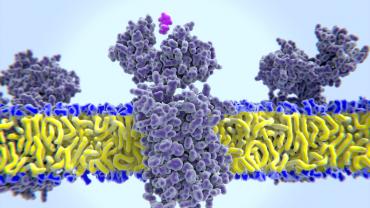
Within the gastrointestinal (GI) tract, diamine oxidase (DAO) is the primary enzyme responsible for metabolizing and degrading histamine. Histamine can come from histamine-rich foods (e.g., fish, cheese, and red wine) or endogenously from the gut microbiome. A DAO enzyme deficiency in the gut characterizes histamine intolerance (HIT). HIT may result in insufficient histamine degradation and cause elevated plasma histamine concentrations and nonspecific, undesirable symptoms.
According to a retrospective study, the most common symptoms in HIT patients are GI-related, including abdominal distension, postprandial fullness, diarrhea, abdominal pain, and constipation. In one clinical survey, bloating was the most common and severe symptom in more than 90% of HIT patients.
HIT may result from genetic polymorphisms, certain pharmacological drugs, or GI disorders. Although further research is needed, it is proposed that the mucosal damage as a result of various GI disorders may lead to a decrease in DAO activity. Human and animal studies suggest that a DAO deficiency may correlate negatively with intestinal barrier dysfunction and colonic inflammatory responses.
For instance, human studies have linked DAO deficiency to gastroenteritis, irritable bowel syndrome (IBS), short bowel syndrome, GI surgery, non-celiac gluten sensitivity, inflammatory bowel disease, and small intestinal bacterial overgrowth. About 80% of IBS patients have identified histamine-rich foods to trigger GI symptoms. A human clinical study (n = 115) concluded that serum DAO was significantly lower in patients with celiac disease and ulcerative colitis than in healthy patients, regardless of disease activity level.
Research is exploring the connection between HIT and alterations in the gut microbiome. A greater abundance of histamine-secreting bacteria may contribute to HIT development. The gut microbial environment of healthy individuals was compared to HIT patients in a clinical study (n = 26). The HIT patients displayed dysbiosis with a significantly lower proportion of gut-supportive bacteria (Prevotellaceae, Ruminococcus, Faecalibacterium and Faecablibacterium prausnitzii) compared to the healthy group. The HIT group also demonstrated a higher abundance of histamine-secreting bacteria, favoring the enhanced accumulation of histamines in the gut.
Schink and colleagues examined the intestinal bacterial composition in healthy controls versus patients with HIT, food hypersensitivity, and food allergies (n = 64). Compared to the other groups, the HIT patients displayed an altered occurrence of Proteobacteria and Bifidobacteriaceae, reduced alpha diversity, and elevated stool zonulin levels. The researchers determined that these alterations may contribute to dysbiosis and intestinal barrier dysfunction, potentially driving disease pathogenesis.
A histamine-free diet may attenuate HIT-related GI complaints. However, the histamine content in food is frequently unknown. It can vary depending on the manufacturing processes, cleanliness of materials, microbial composition, fermentation, ripeness, and storage time of the food product. Consequently, following a strict histamine-free diet may be challenging. Oral supplementation of DAO enzymes may be supportive in promoting normal histamine homeostasis.
Recent findings suggest a strong association between HIT and GI health in adults and children, with exact mechanisms requiring further investigation. Supporting normal histamine homeostasis may benefit overall GI health and function.
By Danielle Moyer, MS, CNS, LDN